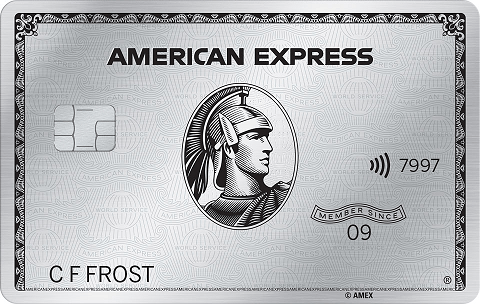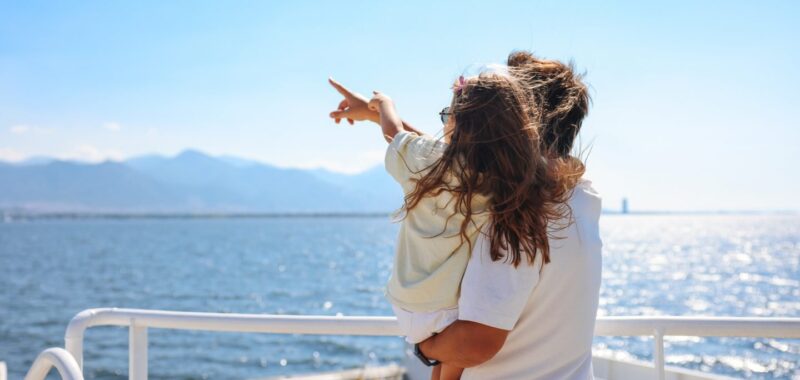Booking a cruise is an exciting experience as you imagine the new shores and destinations you’ll visit. But, deciding on the best time for the trip can be a challenge as travelers juggle school, work and holiday periods to find the right cruise that fits their schedule.
Hurricane season may add to the concern as it can affect travel to areas where cruises depart from or travel to on their itineraries. It is important to know when hurricane season is for cruises, your options if weather curtails your plans and how certain credit cards can save you from any lost expenses.
The best cruise lines always have a contingency plan to keep your dream vacation from being completely derailed (or desailed). Here’s what you need to know.
When is hurricane season?
In the Atlantic basin, hurricane season is between June 1 and Nov. 30, peaking from mid-August to mid-October. Storms can sometimes occur outside of these months, too. In the southern hemisphere, it is between December and March.
Hurricanes that form in the South Pacific and Indian Ocean are known as cyclones, while those that develop over the Northwest Pacific are referred to as typhoons. Cruise ships and hurricanes don’t mix, but passengers need not worry about a hurricane sinking a boat because the crew has advanced weather reports to help avoid impending storms.
Travelers will find their ship rerouted or an itinerary canceled entirely before a cruise line jeopardizes its crew, passengers, and ship. The crew on board also undergo significant training on what to do if they encounter rough seas and weather.
🤓Nerdy Tip
Booking a sailing during cruise hurricane season can sometimes result in lower prices — and also reveal better deals in exchange for the risk of traveling during hurricane season. Hurricanes will most likely affect sailings in the Caribbean and Gulf of Mexico.
Can hurricanes move faster than a cruise ship?
Cruise vessels can reach speeds of as much as 34 miles per hour (although rare), while hurricanes typically only reach speeds of 10-15 miles per hour — although they can go as fast as 40 miles per hour.
This means ships can steer away from the storm if a hurricane changes course at the last minute. You may encounter rougher waters and an impacted itinerary, but rest assured, the captain and crew stay alert to ensure the safety of everyone onboard.
Can my cruise itinerary change if there’s a hurricane?
If there’s a hurricane headed to (or already at) one of your ports of call, your cruise itinerary may change before sailing, or during the sailing.
Typically, the cruise line will monitor the storm’s progress and alert guests on board with impromptu port changes or update its website and send appropriate communication if it’s before sailing. Changes can mean an Eastern Caribbean sailing rerouting to a Western Caribbean sailing, skipping a port altogether, or shifting the days you’ll visit each port based on the weather.
At times, cruises are extended or shortened by a few days if the storm is between the ship’s current location and the disembarkation port.
🤓Nerdy Tip
Any shore excursions missed due to a change in itinerary are refunded as long as they were purchased through the cruise line. If you purchase excursions through a third-party, there is no guarantee you will get a refund.
When do cruises cancel a sailing?
It is very uncommon for a cruise line to cancel a sailing entirely. More than likely, it would alter the itinerary to avoid adverse weather and visit different ports or skip some altogether.
The best way to avoid any problems when traveling during hurricane season is to head to destinations that are not affected. This means that during the North American summer (June-September), travelers are less likely to have disruption in places like the Mediterranean. While during the South American summer (December-February), the Caribbean can be more reliable. Some Caribbean islands like Aruba, Bonaire and Curacao rarely see hurricanes, even during hurricane season.
If you want to avoid hurricane-related cancellations or reroutes, consider destinations that do not experience hurricanes, such as Alaska or Antarctica. There, it’s more likely that fog, rough seas, wind or snow is more of an issue. In these cases, cruise ships that sail to these destinations are usually equipped with easy alternative plans to avoid any travel disruption.
Will travel insurance help?
Yes, adding travel insurance can be very helpful when booking a cruise during hurricane season. Cruise companies may offer it during the reservation process, but travelers can save money by using certain credit cards that have built-in travel insurance with coverages for weather mishaps, among other things. This can include everything from delayed flights getting to the cruise ship, to being unable to sail due to a natural disaster.
This means using the right credit card that already comes with travel protections is key so you don’t have to purchase anything else.

Chase Sapphire Preferred® Card

Chase Sapphire Reserve®

The Platinum Card® from American Express
on American Express’ website
Rates & Fees

Ink Business Preferred® Credit Card
Travel protections (not a comprehensive list)
• Trip delay: Up to $500 per ticket for delays more than 12 hours.
• Trip cancellation: Up to $10,000 per person and $20,000 per trip. Maximum benefit of $40,000 per 12-month period.
• Trip interruption: Up to $10,000 per person and $20,000 per trip. Maximum benefit of $40,000 per 12-month period.
• Baggage delay: Up to $100 per day for five days.
• Lost luggage: Up to $3,000 per passenger.
• Trip delay: Up to $500 per ticket for delays more than 6 hours.
• Trip cancellation: Up to $10,000 per person and $20,000 per trip. Maximum benefit of $40,000 per 12-month period.
• Trip interruption: Up to $10,000 per person and $20,000 per trip. Maximum benefit of $40,000 per 12-month period.
• Baggage delay: Up to $100 per day for five days.
• Lost luggage: Up to $3,000 per passenger.
• Trip delay: Up to $500 per trip for delays more than 6 hours.
• Trip cancellation: Up to $10,000 per trip. Maximum benefit of $20,000 per 12-month period.
• Trip interruption: Up to $10,000 per trip. Maximum benefit of $20,000 per 12-month period.
• Lost luggage: Up to $3,000 per passenger.
• Trip delay: Up to $500 per ticket for delays more than 12 hours.
• Trip cancellation: Up to $10,000 per trip. Maximum benefit of $20,000 per 12-month period.
• Trip interruption: Up to $10,000 per trip. Maximum benefit of $20,000 per 12-month period.
• Baggage delay: Up to $100 per day for five days.
• Lost luggage: Up to $3,000 per passenger.
Some travelers like to double down and buy extra protection when booking an expensive travel experience. Hurricane travel insurance can provide peace of mind when spending money on a memorable trip.
If you’re flying into the city where you’re embarking, we’d suggest trying to arrive a day or two before your cruise departs, rather than arriving on departure day.
If booking the trip independently, be sure to allow sufficient time to get to the port where your ship departs.
Cruise ships and hurricanes recapped
While certain times of year can be riskier for maintaining a ship’s itinerary and schedule, cruising during hurricane season is not always a bad idea. Since hurricane season covers almost the entire summer and fall in the northern hemisphere, it can be hard to avoid, especially for families that want to travel when kids have school holidays. And a hurricane season cruise can be cheaper or come with extra deals.
The best measures to avoid disruption are to purchase travel insurance, use a credit card with insurance coverage and choose destinations that will minimize any weather impact.
Insurance Benefit: Trip Delay Insurance
-
Up to $500 per Covered Trip that is delayed for more than 6 hours; and 2 claims per Eligible Card per 12 consecutive month period.
-
Eligibility and Benefit level varies by Card. Terms, Conditions and Limitations Apply.
-
Underwritten by New Hampshire Insurance Company, an AIG Company.
Insurance Benefit: Trip Cancellation and Interruption Insurance
-
The maximum benefit amount for Trip Cancellation and Interruption Insurance is $10,000 per Covered Trip and $20,000 per Eligible Card per 12 consecutive month period.
-
Eligibility and Benefit level varies by Card. Terms, Conditions and Limitations Apply.
-
Underwritten by New Hampshire Insurance Company, an AIG Company.
Insurance Benefit: Baggage Insurance Plan
-
Baggage Insurance Plan coverage can be in effect for Covered Persons for eligible lost, damaged, or stolen Baggage during their travel on a Common Carrier Vehicle (e.g., plane, train, ship, or bus) when the Entire Fare for a ticket for the trip (one-way or round-trip) is charged to an Eligible Card. Coverage can be provided for up to $2,000 for checked Baggage and up to a combined maximum of $3,000 for checked and carry-on Baggage, in excess of coverage provided by the Common Carrier. The coverage is also subject to a $3,000 aggregate limit per Covered Trip. For New York State residents, there is a $2,000 per bag/suitcase limit for each Covered Person with a $10,000 aggregate maximum for all Covered Persons per Covered Trip.
-
Eligibility and Benefit level varies by Card. Terms, Conditions and Limitations Apply.
-
Underwritten by AMEX Assurance Company.

